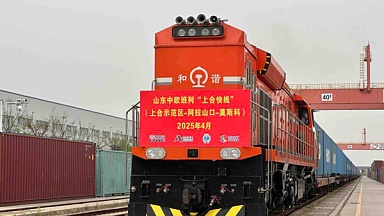Russia’s construction sector has reached a stage in its development when technology, construction materials and equipment largely determine whether infrastructure projects succeed.
The quality of project specifications and documents, as well as equipment deliveries, especially when relying on imported parts, can lead to certain challenges. This creates the need to pay special attention to contractors.
Infrastructure development has a critical role to play in promoting economic growth and improving the quality of life in the regions. Transport is a priority sector in terms of infrastructure development. Upgrading the Baikal-Amur Mainline and the Trans-Siberian Railway, and also building a high-speed railway connecting Moscow and St Petersburg, are key projects for enhancing railway connectivity. As for motor roads and efforts to expand the road network, this includes designing and building the Vostok (East, M-12) motorway from Moscow to Kazan and on to Yekaterinburg. The cumulative effect from M-12’s potential in generating higher tourist flows has been estimated at RUB 114 billion. The project also created 7,000 new jobs. The project to build the Rossiya (Russia) motorway will link three major metropolitan areas, i.e., Kazan, Ufa, and Yekaterinburg, followed by an effort to connect Samara to the highway network in the Urals and the Volga region. The initiative to upgrade the Kavkaz (Caucasus) motorway will continue as part of the North-South International Transport Corridor.
Regarding the project to build the Moscow Central Circle (MCC) and its operation, it must be noted that it helped divert freight trains from central Moscow. The effort included adding more tracks and building nine passenger hubs bringing together metro stations, commuter trains and surface transport.
Major infrastructure projects must have shorter investment cycles, considering that a two-year delay leads to a 10 to 15 percent increase in project costs. Meanwhile, there has been a decline in the share of budget spending on engineering and transport infrastructure in national GDP from 1.9 percent in 2019 to 1.7 percent in 2023. In some regions, this indicator dropped by 20−22 percent in the first six months of 2024 compared to the same period in 2023.
Regions are facing a new economic landscape. National projects offer opportunities for developing regional economic assets and their territories, while infrastructure loans, public-private partnership mechanisms and concessions are designed to address the existing engineering and infrastructure bottlenecks. In this context, drafting and carrying out the Infrastructure for Life national project to promote regional infrastructure development in various aspects is instrumental. Utilities infrastructure will require at least RUB 4.5 trillion in investment by 2030, with half of this amount coming from sources other than budget funding.
Distributing budget and non-budget investment in infrastructure projects also calls for a balanced approach and setting priorities in terms of project timelines and funding. The need to adopt a strategic approach to establishing and distributing manufacturing capabilities, as well as allocating resources across the country, must be taken into account when drafting and adopting the Spatial Development Strategy of the Russian Federation until 2036. There is also a need for additional state support mechanisms for infrastructure projects in view of high interest rates and borrowing costs.
Author: Alexander Khodachek


